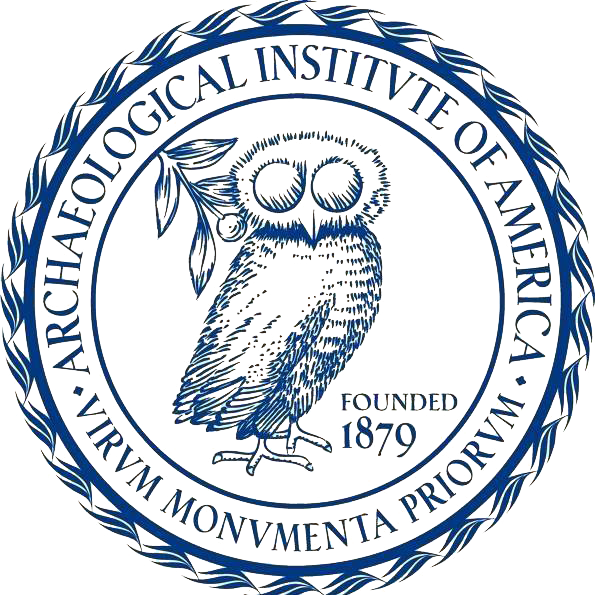Dr. Dylan Rogers from Florida State University
Using Archaeology to Reconstruct Religious Rituals in Roman Waterscapes
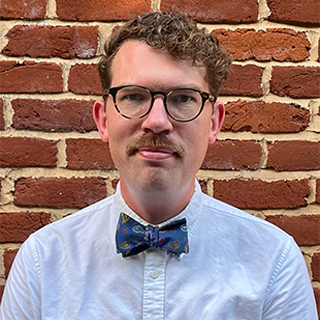 In the popular imagination, Roman religion often conjures up images of grand temples, elaborate processions, and impressive sacrifices, especially the during the period of the Roman Empire. But what of more ‘mundane’ religious experiences that happened daily all across the Roman world? This talk, which discusses and employs the approaches of ‘lived ancient religion’ and sensory archaeology, seeks to make the case for understanding ancient Roman religious experience that was ephemeral (or under-studied), paying close attention to folks who were of non-elite status. To do so, a variety of evidence, from the built environment of sanctuaries and votive objects, is employed to reconstruct religious rituals in Roman religion in water-related contexts, which, in turn, highlight notions of the blending of cultural identities, connectivity, and even souvenir markets throughout the Roman Empire.
In the popular imagination, Roman religion often conjures up images of grand temples, elaborate processions, and impressive sacrifices, especially the during the period of the Roman Empire. But what of more ‘mundane’ religious experiences that happened daily all across the Roman world? This talk, which discusses and employs the approaches of ‘lived ancient religion’ and sensory archaeology, seeks to make the case for understanding ancient Roman religious experience that was ephemeral (or under-studied), paying close attention to folks who were of non-elite status. To do so, a variety of evidence, from the built environment of sanctuaries and votive objects, is employed to reconstruct religious rituals in Roman religion in water-related contexts, which, in turn, highlight notions of the blending of cultural identities, connectivity, and even souvenir markets throughout the Roman Empire.
THIS LECTURE TO TAKE PLACE AT THE BEACHES MUSEUM FOR INTERNATIONAL ARCHAEOLOGY DAY
Dr. Adam King from the University of South Carolina
The Rise of Etowah: Creating Community, Place, and Identity
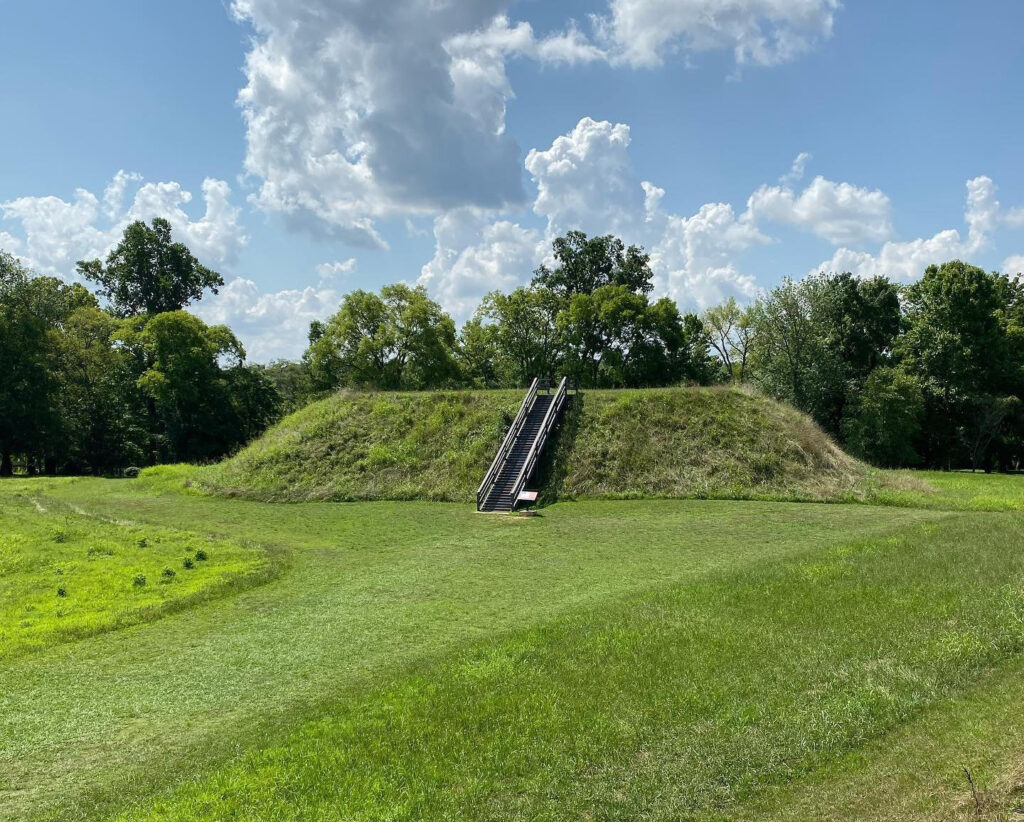
The Etowah site is one of the best-known 14th century Indigenous ritual centers in the Deep South. As a place, Etowah began in the 12th century when local people and immigrants from neighboring regions brought together a unique set of practices and ideas to create a new kind of community. By the start of the 14th century, an influx of new people and ideas ushered in Etowah’s rise to prominence as its architects transformed their landscape to create an impressive ritual and political center. Within a few generations, an attack by an unknown enemy ended that reign when they burned the Etowah community and severed its connection to the sacred. In this talk, Dr. King explores how the people who built Etowah used everyday things, monuments, and the sacred to forge a sense of place, history, and identity. LEARN MORE ABOUT ETOWAH MOUNDS STATE HISTORIC SITE
Adam King is a Research Associate Professor in the Research Division. His research interests center on variation in the organization of Mississippian period societies in the Deep South. He is currently pursuing projects in the Etowah River Valley of northwestern Georgia and the middle Savannah River Valley on the Georgia-South Carolina border. In the Etowah Valley, he is working on reconstructing the history of the polities associated with the famous Etowah site. Current projects include 1. creating GIS layers and a relational database to analyze the extensive mortuary data from Etowah's Mound C, 2. exploring beliefs about the sacred and their intersection with social inequality through the study of Mississippian art and iconography, and 3. investigating the layout of the Etowah site through full cover remote sensing surveys. In the Savannah Valley, he is exploring the histories of four small centers and associated polities through examination of town layout and settlement distributions.
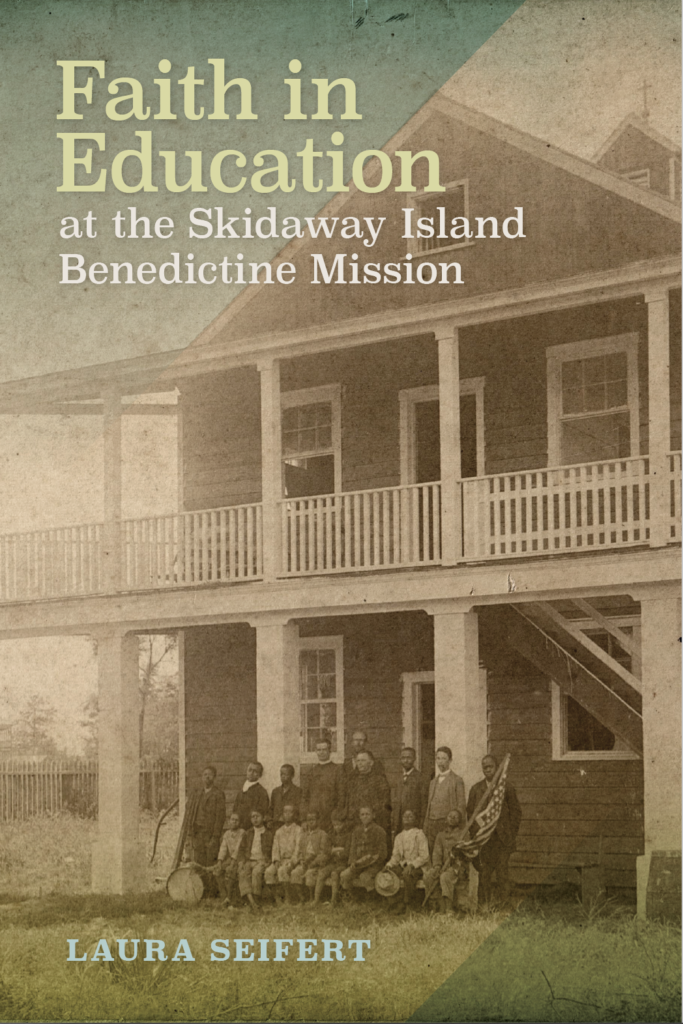 Laura Seifert,
Laura Seifert,
Savannah Archaeological Alliance
Faith in Education at the Skidaway Island Benedictine Mission
Following emancipation, education was considered an urgent priority in the African American community. Laura Seifert's forthcoming book follows the Benedictine contributions and blunders in Black education and Savannahians’ negotiations of those efforts. She will discuss her archaeological excavations at the Benedictine's Skidaway Island, Georgia, school.
ABOUT THE BOOK:
Having survived the turmoil of Reconstruction, several hundred African American tenant farmers were settled on Skidaway Island, Georgia, and led a fairly quiet existence. In 1877 Benedictine monks intruded into this relatively safe, if desperately poor, haven and built a Catholic mission and boys’ boarding school. For the next two decades, the Benedictines and locals negotiated for influence over the islanders’ religious convictions and education.
Faith in Education at the Skidaway Island Benedictine Mission brings together the recovered archaeological data and extensive Benedictine archives to reconstruct the intersecting lives of monks, students, lay brothers, and African American neighbors on Skidaway Island. Unlike a purely historical treatment, this book amplifies the documentary evidence with archaeological findings, including glass from arched church windows, writing slate and slate pencil fragments, a kerosene lamp, and harmonica fragments.
The narrative balances the chronological story of the Skidaway Island mission with the larger history of African American education in Savannah and Chatham County from 1865 to the mission’s closure circa 1900. Ultimately, Laura Seifert’s analysis shows how the roots of our educational system resulted in inequities today, particularly because racism is a prominent thread that connects past and present problems.
Savannah Archaeological Alliance Founder Laura Seifert has nearly 20 years of experience in archaeology, museums, and higher education. Seifert has spent her career working on archaeology projects from the Canadian border to the Caribbean, with a focus on public archaeology, museums, and the southeastern United States. Ms. Seifert has worked at diverse museums such as Mount Vernon and St. Mary’s City and taught at the Armstrong Campus of Georgia Southern University for seven years (or two name changes). As an Instructor of Anthropology at the Armstrong Campus of Georgia Southern University, she has developed five new archaeology courses in past seven years. Seifert also co-founded and directed Digging Savannah, Armstrong’s public archaeology program. Digging Savannah projects included smartphone apps for exploring archaeology in Savannah, a lecture series, walking tours, and excavations at the Sorrel-Weed House and Skidaway Island’s Benedictine Monastery and Freedmen School. Ms. Seifert’s full CV is available here.
Dr. Thomas Pluckhahn, University of South Florida
Historical Ecology Reveals the “Surprising” Direction and Extent of Shifting Baselines for the Florida Manatee
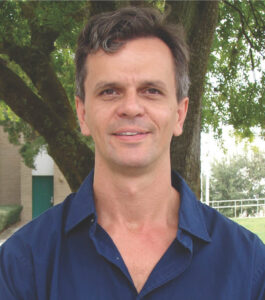 Biologists are increasingly aware of the problem of “shifting baselines”: our accepted norms regarding the range and abundance of animal species change from one generation to the next. Historical ecological studies—drawing from archaeological and historical data—demonstrate the surprising extent to which contemporary assumptions misrepresent premodern baselines, generally by greatly underestimating losses that have taken place in the Anthropocene. However, in at least a few cases, historical ecologists have revealed that our baselines sometimes overestimate premodern species abundance. I suggest that such may be the case for the Florida manatee, a subspecies of the West Indian manatee found primarily in Florida, USA.
My reviews of archaeological and historical records suggest that manatee populations in Florida were very small in the Precolonial and Colonial Periods, possibly representing infrequent in-migration from the Caribbean during favorable climate conditions. Manatees expanded in number and range across the Florida peninsula during the Territorial/Early Statehood and Early Modern Periods, first northward on the Atlantic Coast and later along the coast of the Gulf of Mexico. These expansions track increasing human populations, associated anthropogenic landscape alterations, and social and policy changes. Historical ecology is critical for “shaping a better Anthropocene” for humans and manatees in Florida.
Biologists are increasingly aware of the problem of “shifting baselines”: our accepted norms regarding the range and abundance of animal species change from one generation to the next. Historical ecological studies—drawing from archaeological and historical data—demonstrate the surprising extent to which contemporary assumptions misrepresent premodern baselines, generally by greatly underestimating losses that have taken place in the Anthropocene. However, in at least a few cases, historical ecologists have revealed that our baselines sometimes overestimate premodern species abundance. I suggest that such may be the case for the Florida manatee, a subspecies of the West Indian manatee found primarily in Florida, USA.
My reviews of archaeological and historical records suggest that manatee populations in Florida were very small in the Precolonial and Colonial Periods, possibly representing infrequent in-migration from the Caribbean during favorable climate conditions. Manatees expanded in number and range across the Florida peninsula during the Territorial/Early Statehood and Early Modern Periods, first northward on the Atlantic Coast and later along the coast of the Gulf of Mexico. These expansions track increasing human populations, associated anthropogenic landscape alterations, and social and policy changes. Historical ecology is critical for “shaping a better Anthropocene” for humans and manatees in Florida.Alex Diaz, Master Student, Florida State University
Crafting Bones: An Analysis of a Worked Bone Assemblage from a Mississippian Mound Complex in Northeast Florida
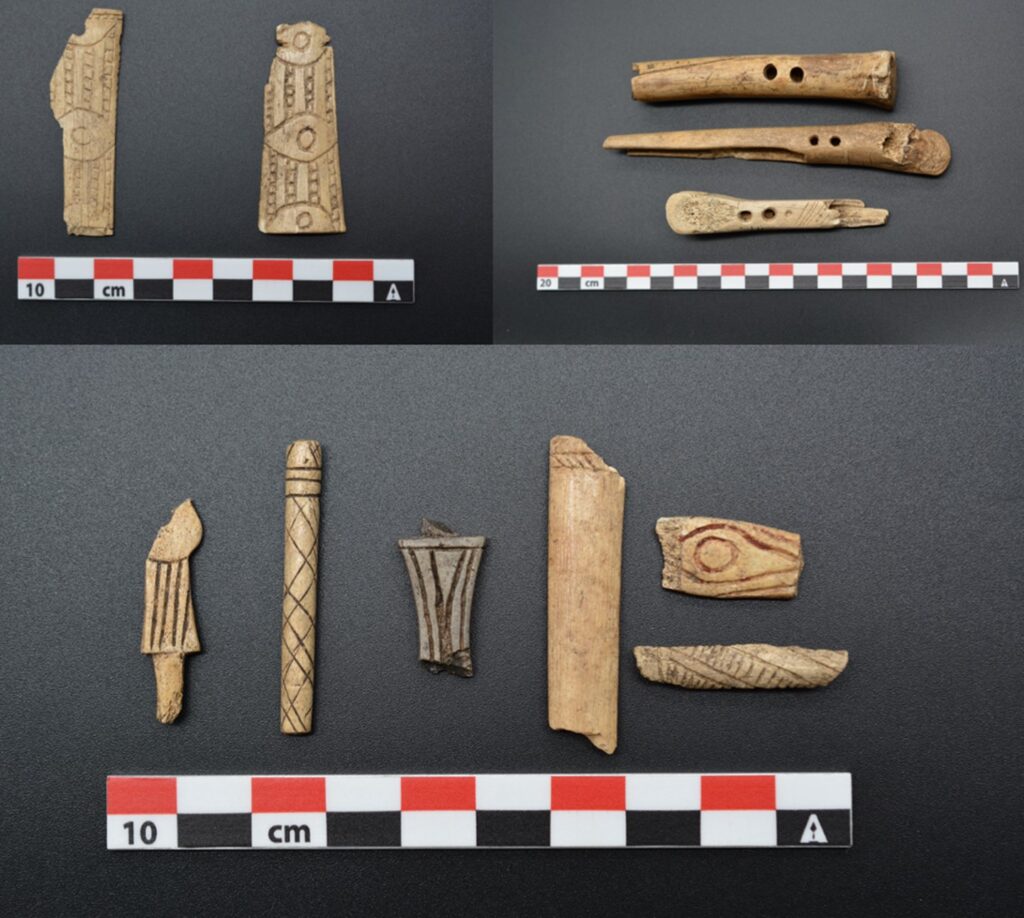
Bone has been used as a medium for crafting both tools and decorative items since our earliest ancestors; however, this important component of material culture has often been overlooked. The analysis of the worked bone assemblage recovered from the excavations at the Mill Cove Complex has the potential to provide insights into the role of worked bone within a unique ritual context. Diaz worked to create a typology using a multi-analytical approach to highlight the relationships between form and function supported by use-wear and macro fracture analysis to provide insights into the manufacturing, use, and discard of the worked bone artifacts recovered from the site. The data gathered from this study has contributed to a better understanding of the role worked bone played within ritual contexts among the pre-contact communities along Florida’s Northeast coast.
Dr. Tate Paulette from North Carolina State University
When Beer Flowed Like Wine: Beer and Brewing in Bronze Age Mesopotamia
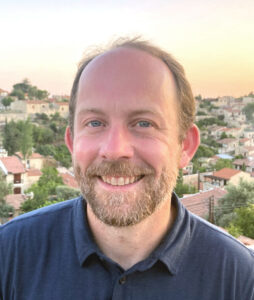 We may be living in the age of craft brewing, but the craft of brewing has much deeper roots. For thousands of years, people have been intentionally fermenting cereal grains to create their own unique versions of the intoxicating beverage that we now call beer. In ancient Mesopotamia, beer was produced on a massive scale and was consumed on a daily basis by people across the socio-economic spectrum. Beer was a gift from the gods, a marker of civilization, a dietary staple, a social lubricant, a ritual necessity, and a reason for celebration. It was consumed at feasts, festivals, and ritual ceremonies, but also at home, on the job, and in neighborhood taverns. It was produced by brewers working for the powerful palace and temple institutions and also by local tavern keepers and homebrewers. This lecture explores the archaeological, artistic, and written evidence for beer and brewing in Bronze Age (3000–1200 BC) Mesopotamia, as well as recent efforts to recreate Mesopotamian beer.
We may be living in the age of craft brewing, but the craft of brewing has much deeper roots. For thousands of years, people have been intentionally fermenting cereal grains to create their own unique versions of the intoxicating beverage that we now call beer. In ancient Mesopotamia, beer was produced on a massive scale and was consumed on a daily basis by people across the socio-economic spectrum. Beer was a gift from the gods, a marker of civilization, a dietary staple, a social lubricant, a ritual necessity, and a reason for celebration. It was consumed at feasts, festivals, and ritual ceremonies, but also at home, on the job, and in neighborhood taverns. It was produced by brewers working for the powerful palace and temple institutions and also by local tavern keepers and homebrewers. This lecture explores the archaeological, artistic, and written evidence for beer and brewing in Bronze Age (3000–1200 BC) Mesopotamia, as well as recent efforts to recreate Mesopotamian beer.
Dr. Tate Paulette studies urban food systems in the ancient world. A native of North Carolina, he holds an MA and PhD in Near Eastern Archaeology from the University of Chicago and an MA in Archaeology from the University of Edinburgh. His research explores agricultural practices, gastro-politics, and state making in the world’s first cities and states, with a focus on Mesopotamia and the Near East. He also studies ancient alcohol, and he has spearheaded a collaborative effort to recreate Sumerian beer using authentic ingredients, equipment, and brewing techniques.
Dr. Sarah Freidline, University of Central Florida
Recent advances in human origins research: new insights from Northern Africa to Southeast Asia
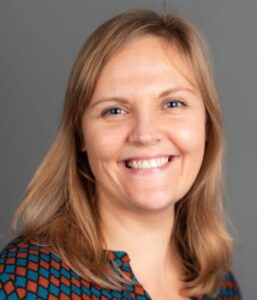 New technologies and methodological approaches in the last decades have led to exciting advances in paleoanthropology—especially concerning the origin of our species, dated to roughly 300,000 years ago, and our subsequent dispersions out of Africa. Current fossil and genomic data suggest that we were not the only members of our genus alive during this time. In this talk, I will discuss recent advances and pending questions in human origins research, focusing on my work on some of the earliest Homo sapiens fossils from Northern Africa (Jebel Irhoud, Morocco) and Southeast Asia (Tam Pà Ling, Laos), as well as our enigmatic cousins, the Denisovans.
New technologies and methodological approaches in the last decades have led to exciting advances in paleoanthropology—especially concerning the origin of our species, dated to roughly 300,000 years ago, and our subsequent dispersions out of Africa. Current fossil and genomic data suggest that we were not the only members of our genus alive during this time. In this talk, I will discuss recent advances and pending questions in human origins research, focusing on my work on some of the earliest Homo sapiens fossils from Northern Africa (Jebel Irhoud, Morocco) and Southeast Asia (Tam Pà Ling, Laos), as well as our enigmatic cousins, the Denisovans.
Dr. Freidline is a biological anthropologist who specializes in paleoanthropology. Her research focuses on the evolution and development of human craniofacial morphology. She applies state-of-the-art methods to interpret craniofacial growth in fossil species ranging from Homo erectus to H. neanderthalensis and H. sapiens with the ultimate goal of better understanding the evolution of the H. sapiens face. Freidline combines geometric morphometric methods and surface histology to quantify macro and microscopic shape changes. Furthermore, as fossil bones are nearly always damaged, a large part of her work consists of virtual fossil reconstruction.
Sarah received her Ph.D. in 2012 working jointly at the City University of New York (CUNY) Graduate Center and the Max Plank Institute for Evolutionary Anthropology (MPI-EVA) in Leipzig, Germany. From 2012 to 2020, she worked as a post-doctoral researcher at the MPI-EVA in the Department of Human Evolution.
Dr. Charles Cobb from the Florida Museum of Natural History at the University of Florida
Following the Metal Wake of Spanish Expeditions in the Southeast
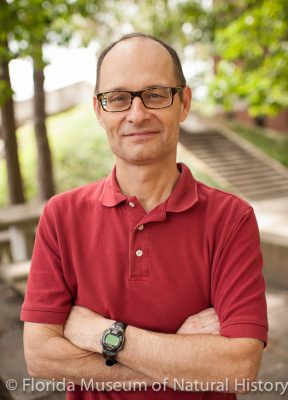 Many of the artifacts from 16th-century Spanish explorations found on Native American sites in the American Southeast have been documented from burial contexts. This has given rise to the received wisdom that these objects were usually gifts distributed to Indigenous elites. Over the past decade, archaeological research at sites in Mississippi, Alabama, and Georgia has challenged this perspective. Systematic-metal detecting surveys have revealed that objects of European origin are far more abundant than previously realized and are often found in domestic contexts. This work is opening up new interpretations about how Native Americans acquired European goods, as well as how they modified these objects in ways that aligned with Indigenous worldviews.
Many of the artifacts from 16th-century Spanish explorations found on Native American sites in the American Southeast have been documented from burial contexts. This has given rise to the received wisdom that these objects were usually gifts distributed to Indigenous elites. Over the past decade, archaeological research at sites in Mississippi, Alabama, and Georgia has challenged this perspective. Systematic-metal detecting surveys have revealed that objects of European origin are far more abundant than previously realized and are often found in domestic contexts. This work is opening up new interpretations about how Native Americans acquired European goods, as well as how they modified these objects in ways that aligned with Indigenous worldviews.
Charles Cobb has been the Curator of Historical Archaeology at the Florida Museum of Natural History since 2014. He also is Director of the Museum’s Randell Research Center located on Pine Island in southwest Florida. He received his PhD in 1988 from Southern Illinois University and was subsequently a faculty member in anthropology at SUNY-Binghamton and University of South Carolina before his arrival at the University of Florida. Cobb has a long-term interest in the history and archaeology of Indigenous cultures of the southeastern United States, with a particular focus on interactions between Native Americans and European colonials. Since his arrival at Florida, he has been developing an online digital database of Florida Museum artifact collections from St. Augustine and Franciscan mission sites. Meanwhile, his field projects have had two emphases: first, addressing the impacts of Spanish expeditions on Native American societies during the 1500s A.D.; second, investigating the widespread abandonment of Indigenous towns in the mid-South during the 1400s A.D. Since 2015, his fieldwork has been carried out in collaboration with the Chickasaw Nation.
